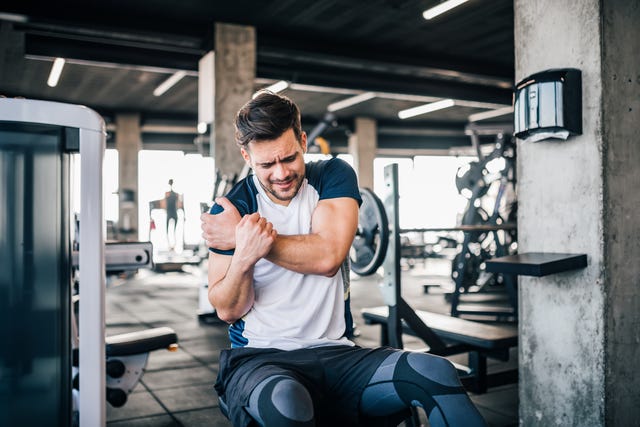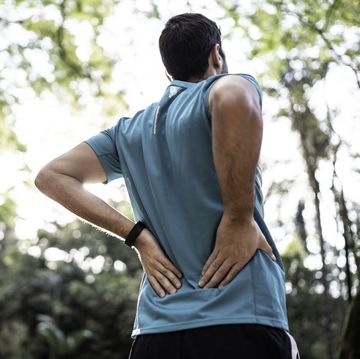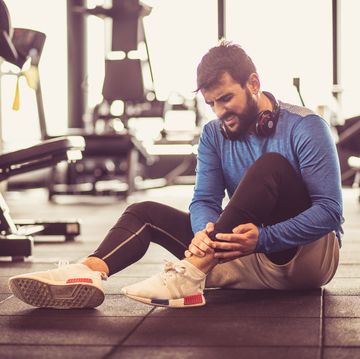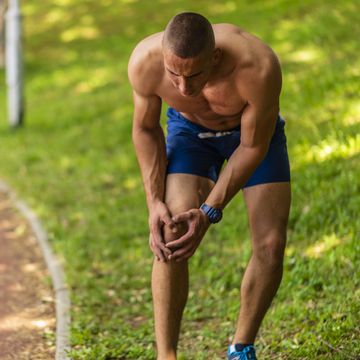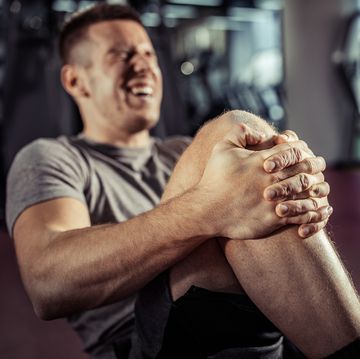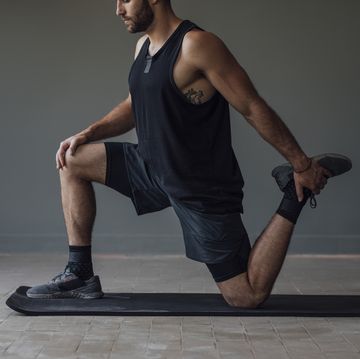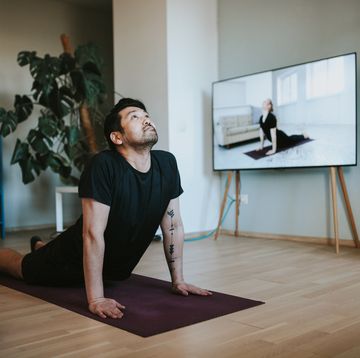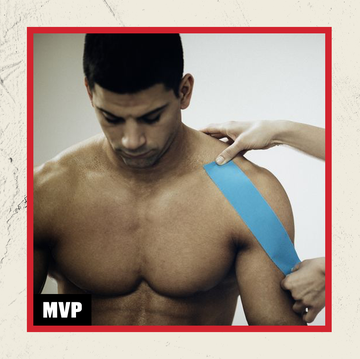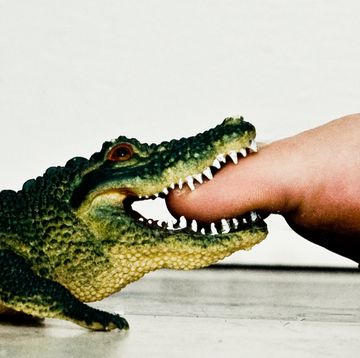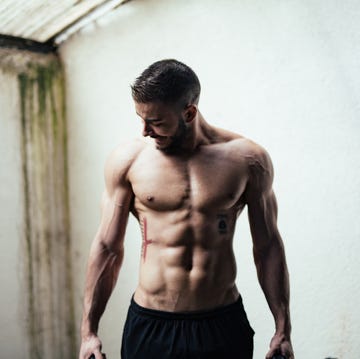Your Personal PT, Rachel Tavel, is a Doctor of Physical Therapy (DPT) and Certified Strength and Conditioning Specialist (CSCS), so she knows how to get your body back on track when it's out of line. In this weekly series, she gives you tips on how to feel better, get stronger, and train smarter.
You’re at the gym doing your thing when you suddenly feel a sharp pain in your shoulder after an overhead press. You’re not sure what just happened, but you know it didn’t feel good.
You may be experiencing acromioclavicular (AC) joint pain.
The AC joint is located at the top of the shoulder, formed by the acromion process of the scapula and the clavicle, two of the bones that help make up the shoulder girdle. The joint consists of two flat surfaces that are held together by ligaments with a fluid filled bursa in between. AC joint dysfunction and pain may be due to a traumatic injury such as falling off a bike with your arm outstretched, repetitive “wear and tear” leading to osteoarthritis and inflammation, or a sprain of the ligaments holding the joint together.
Symptoms of AC joint pain can include a sharp sensation at the top of your shoulder that gets worse with overhead lifting, reaching across your body in front of you or pressure over the joint. Bottom line: you’ll want to put down the big weights before proceeding with your usual upper body workout.
AC joint sprains can come in varying degrees of severity. In extreme cases, the joint can separate completely, causing pain and dysfunction in the shoulder requiring surgery. Luckily, most AC joint pain is the result of repetitive movement patterns with sub-optimal body mechanics and can be treated conservatively with rest, ice and exercise, no knives or needles necessary.
Since weakness can be both a precursor and a result of this type of pain, you’ll want to get ahead of AC joint pain by strengthening the supporting musculature while working on body mechanics and scapular stabilization.
Your Move:
- Strengthen the rotator cuff muscles by performing resisted external and internal rotation (focusing on the external rotation). To do this, use either a resistance band or small dumbbells (2 to 5 pounds max) lying on your side. Adjust the resistance so that you feel a good burn in the muscles after performing 2 to 3 sets of 10 reps. Make sure shoulder blade is down and back at all times.
- Strengthen scapular protractor and stabilizer, the serratus anterior. To do this, begin in the quadruped position or, if pain-free, a modified push up position (on your forearms). Slowly press the shoulder blades away from each other while supporting yourself with your body weight. Hold this protracted position with a neutral spine for about 10 seconds, then slowly come out of it. Repeat 5 to 10 times.
- Work on scapular positioning. Often AC joint pain is the result of allowing your shoulders to translate forward while performing any type of resisted upper body exercise. Try using a wall as a tactile cue to help you keep your shoulder blades down and back as you stand. Walk away from the wall and see if you can maintain this position with your rows, shoulder extension, and external/internal rotation.
Just remember that you shouldn't keep your struggles to yourself. If you’re experiencing a lot of pain and can’t use your shoulder for regular daily tasks, see an orthopedist or doctor of physical therapy.
